Now shipping plant orders promptly 🙂
Valerian, Indian (Valeriana jatamansii) potted plant, organic
$8.50 – $21.95
Family: Valerian (Valerianaceae)
Hardy to zones to 6 to 9, otherwise grown as a potted plant and brought in for the winter
(Syn. Valeriana wallichii, Valeriana spica, Valeriana villosa, Indian Valerian) Herbaceous perennial native to the forest, scrub, and open slopes of the temperate Himalayas, including parts of Afghanistan, Kashmir, Bhutan, NE India, Myanmar, and West and Central China. The plant grows in open sun at higher elevations (up to 10,000 feet) and requires more shade at lower elevations. We find that it prospers best at our low elevation foothill site when given adequate shade and kept moist. In the sun, they go away. A vigorous and extremely pretty plant is Indian Valerian, consisting of a low-lying rosette of heart shaped leaves, green and purple, that very reliably give rise, in the early spring, to multiple upright flowering stalks, miniature, that bear heady flowers of white and pink. Traditional usage (Ayurveda): carminative and sedative, used in treating nervous debility, hysteria, shell shock and neurosis. Plant prefers rich, moist yet well-drained soil and part shade. A slightly acidic soil ranging from pH 4.0 to 6.0 is considered ideal. Space 1 foot apart.
Potted plant Certified Organically Grown

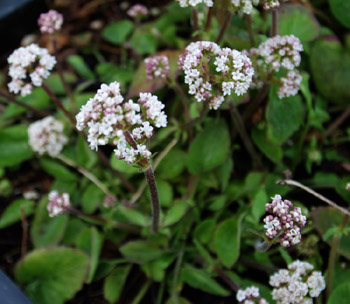
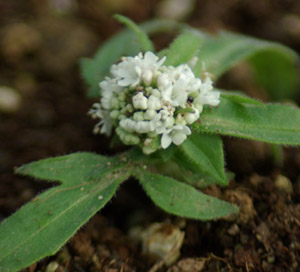
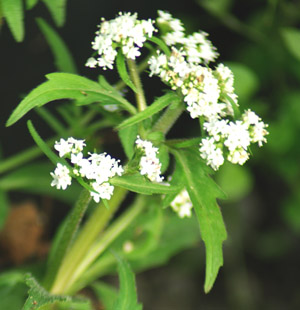
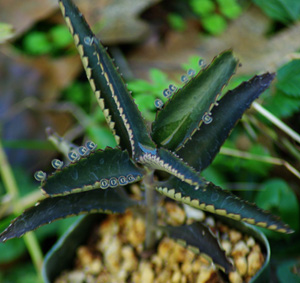

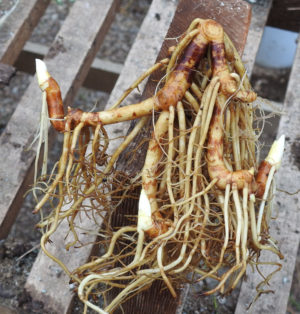
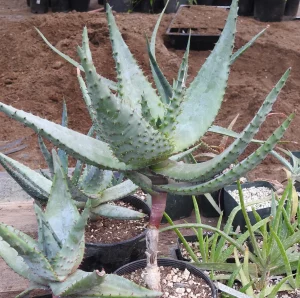
Question
Faizan Tariq –
Hello,
Is this the same as spikenard Jatamansi used for cosmetic purposes? Thank You
Upvote if this was helpful (0) Downvote if this was not helpful (0) Watch Unwatch Flag for removal
Richo Cech –
Hello Faizan,
You might be thinking of “oil of nard” which is made from essential oil of Nardostachys jatamansii, not Valeriana jatamansii. I do think our Indian Valerian is a possible substitute, which may be more and more important, given the rarity of Nardostachys.
Richo
Upvote if this was helpful (0) Downvote if this was not helpful (0) Flag for removal
Question
Scottsflower –
Definitely want to add Valerian to our forest, I know Indian valerian goes better in more shade, which is what we have plenty of, shade with dapple sun. I’m curious about the homestead valerian as well, considering I have acres of woodlands on the Cumberland plateau, should I stick with the Indian version? Keeping in mind that we are building a botanical sanctuary for at risk plants, would the Indian variety still go well within the scheme of the native plant sanctuary. My desire is for medicine and to teach others . I value your opinion greatly
Upvote if this was helpful (0) Downvote if this was not helpful (0) Watch Unwatch Flag for removal
Richo Cech –
hi scott, greetings and thank you for writing. i suppose if one were to be running a strict native plant sanctuary, then only indigenous valeriana could be used, and I’m not familiar enough with the cumberland plateau to know if you even have one there. here we have Valeriana sitchensis which would fill the bill in this ecoregion. My approach has always been to plant everything and figure that the stuff that survives is what’s meant to be here. For me and my land this has been quite effective in bringing in the entire spectrum of beneficials. Just to see the birds cavorting through the land, and next door in an empty field no birds at all, well, its just obvious what the benefits really are. as for native and the definition of native, all plants are native to somewhere, and where does one draw the historical/geographical line to eject some of them and accept others? Its short-sighted and anthropocentric. i’ve been researching plants daily for the last 200 days, a different plant every day, and what I’m finding is that an ecological approach to acceptance and rejection makes more sense, and really is automatic. let the plants be in control. humans have had their turn and thoroughly messed it up. if we serve them instead of acting like we’re in charge, then. . . we’ve got a better chance of surviving. richo
Upvote if this was helpful (0) Downvote if this was not helpful (0) Flag for removal
Scottsflower –
Well said, this is why I trust your thoughts and experiences. My part of the Cumberland plateau is in the Northern Middle part of TN, just on the edge of the Highland Rim which extends towards Nashville. Our lands have been afflicted by fires (40 years ago) logging and poaching. We have a relatively young forest and quite the dynamic piece of land. Topside is your more traditional hardwood forest with large patches of mountain Laurel and long needle pines. Mid way into the valley we have rocky ledges and out croppings, lots of natural run off and spring tributaries That flow off the the ridge line. In the sloping down of the land we’ve already planted ginseng, there is an abundance of wild mushrooms along the lower tributaries, large sections of what is almost like mangroves with massive rhododendrons. Once into the valley near of creek and waterfall we step into the hemlock forest. Our zone is 6b/7a. We do have quite the collection of native plants already growing (thankfully that the poachers don’t want) my goal is to bring back the plants that once grew in abundance here before the fire, logging and poaching. I’d also like to include no invasive species that will not only bring medicine but will peacefully coexistence with what grows here naturally. The soil is rich and the mycelial next work is abundant and thriving. Knowing that I would be planting valerian in a much more wooded environment I wasn’t sure which variety would suit the land best. BTW. We have taken measure to mitigate tresspassers and foragers without permission so that we can begin to reseed/replant the woods to bring back the pants that used to thrive here. Our goal is to protect native Appalachian plants but adding into the mix, what is good, what is food or medicine and what helps rebuild the forest is an important part of this as well. Sorry that was long winded! It’s a passion of mine and I’m just beginning my walk into being a plant/food and medicine steward, lol so I get excited.
Upvote if this was helpful (0) Downvote if this was not helpful (0) Flag for removal
Richo Cech –
we need more growers like this young man out there. you give me great hope for the future
Upvote if this was helpful (0) Downvote if this was not helpful (0) Flag for removal
Question
Michelelynn Ostiguy (verified owner) –
Hello! I live in Maine, 5b, and was wondering what mixture you recommend I use in a pot for this darling. Any other tips? Obviously I bring inside for winter.
Thank you, Michele
Upvote if this was helpful (0) Downvote if this was not helpful (0) Watch Unwatch Flag for removal
Richo Cech –
hi michele, thanks for writing. the indian valerian likes a rich, moist soil. Good drainage is not really needed. you can use organic compost and coir or peat. r
Upvote if this was helpful (0) Downvote if this was not helpful (0) Flag for removal
Question
sleaderman –
valeriana jatamansii vs valeriana officinalis. How do the two compare?
Upvote if this was helpful (0) Downvote if this was not helpful (0) Watch Unwatch Flag for removal
Richo Cech –
Hello, This is a good question. The plants are rather different in terms of their size and growth, although they are both in the same family (the valerianaceae) and have similar sedative properties. Jatamansi is more pleasantly uplifting and aromatic while true valerian root is malodorous and heavy. richo
Upvote if this was helpful (0) Downvote if this was not helpful (0) Flag for removal